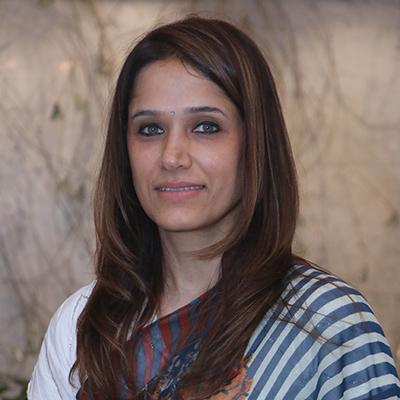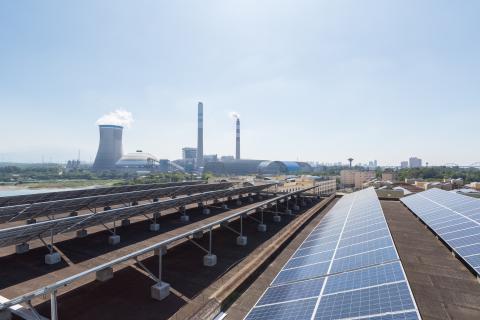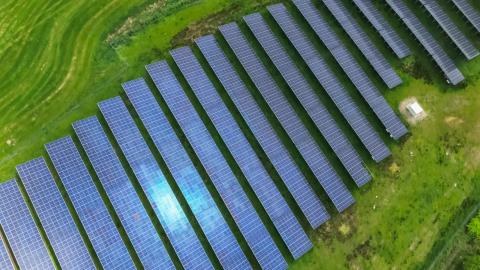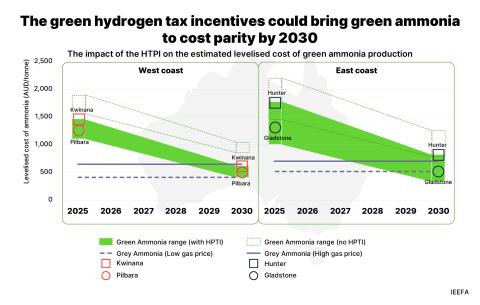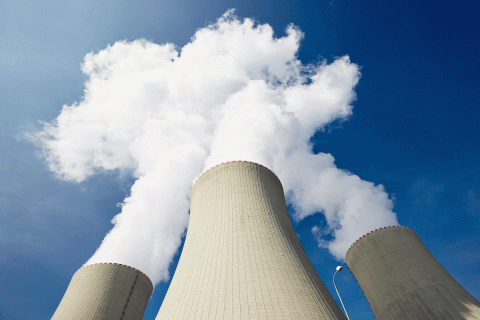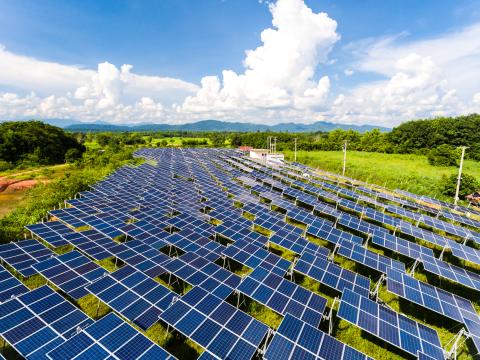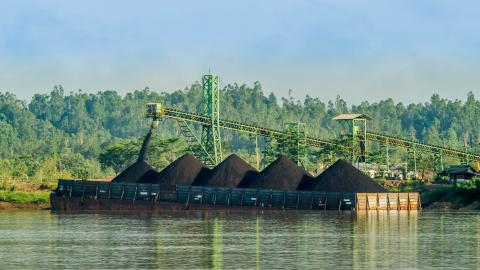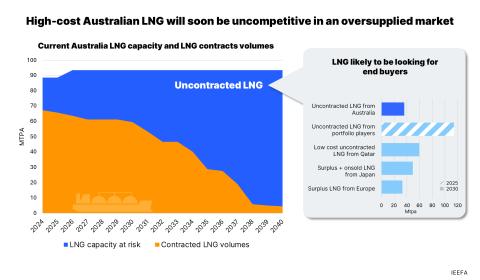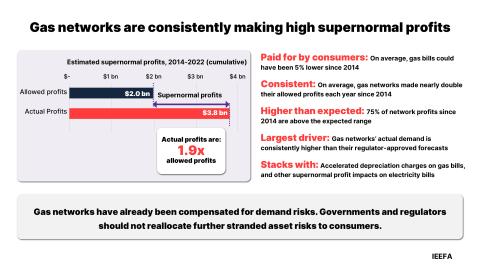Surge in India’s renewables tendering set to keep coal’s share below 50% in total installed capacity
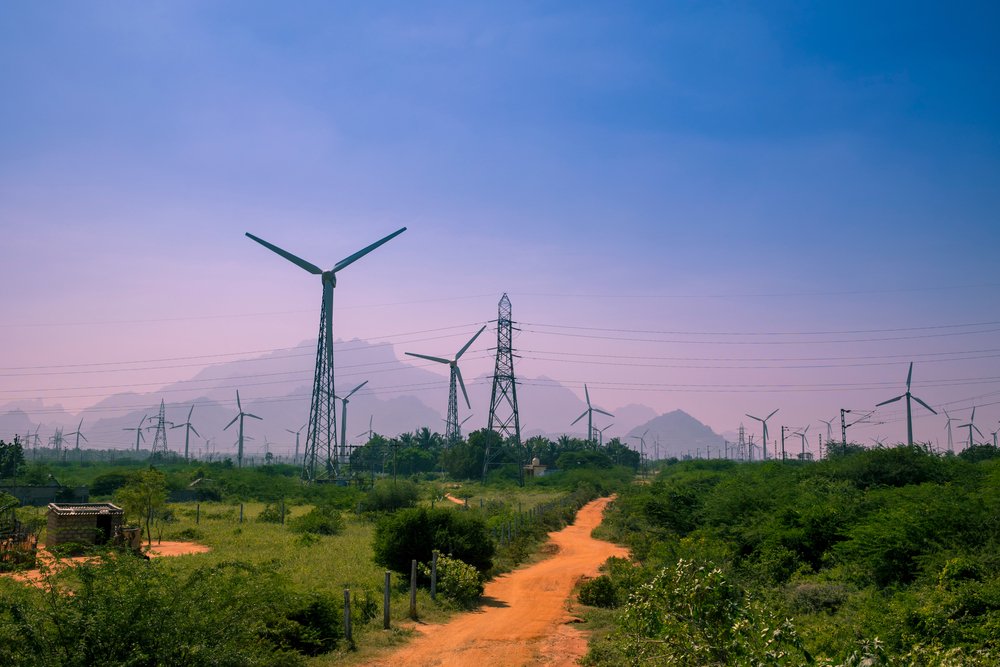
While the country is adding renewable energy capacity at a faster pace than coal, the share of coal-fired generation is still high
Key Takeaways:
Coal’s share in total power generation capacity in India dropped below 50% for the first time in several decades in the first quarter of 2024.
A record 69+ gigawatts (GW) of renewable energy tenders were issued across India in fiscal year (FY)2024, exceeding the central government’s target of 50GW.
India surged to third in the world in terms of solar power generation in 2023.
15 May 2024 (IEEFA South Asia, Ember, and JMK Research): India is rapidly emerging as a renewable energy powerhouse on the world stage with a surge in both capacity addition and tendering to add more plants, as evidenced by a suite of new research reports. The trend points to a more sustainable future for India’s electricity sector, even as the country continued to generate more electricity from its coal-fired plants in recent months.
Renewable energy accounted for 71.5% of the record 13,669 megawatts (MW) power generation capacity added by India in the first quarter (Jan-Mar) of this year (2024), while coal’s share (including lignite) of total power capacity dropped below 50% for the first time since the 1960s.
This is well ahead of the Government of India’s target to establish 50% cumulative power generation capacity from non-fossil fuel-based sources by 2030, according to the latest POWERup quarterly report from the Institute for Energy Economics and Financial Analysis (IEEFA).
The decline mirrors a global trend, with demand for coal in G7 countries plumbing record lows in 2023, levels not seen since 1900. To accelerate the transition, G7 countries last month vowed to phase out all unabated coal power generation by 2035, expanding on their commitment to end all construction of new coal-fired power plants.
As 2024 shapes as a pivotal year in the global transition away from fossil fuels, India is at the forefront, makes great strides towards the target of Net Zero greenhouse gas emissions.
Large-scale renewable energy projects have been the focus of intense interest, as evidenced by tender issuances crossing a record 69 gigawatts (GW), according to the report, Utility-scale renewable energy tendering trends in India, released this week by IEEFA and JMK Research.
The tenders issued for utility-scale renewable energy projects in FY2024 far surpassed the government’s seemingly ambitious target of 50GW.
“After a slump from 2019 to 2022 due to supply-chain issues and global price spikes brought on by the COVID-19 pandemic and Russia’s invasion of Ukraine, the market has rebounded and gone from strength to strength,” says the report’s contributing author, Vibhuti Garg, Director – South Asia, IEEFA.
“There is strong investor interest in the Indian utility-scale renewable energy market. The primary reasons are the large-scale potential for market growth, central government support in terms of targets and regulatory frameworks, and higher operating margins.”
India has rocketed to third in the world’s solar power generation rankings, behind only China and the US, according to Ember’s fifth annual Global Electricity Review of 80 countries, released last week. Ranked ninth in 2015, India has now surpassed Japan, which, along with fellow G7 member Germany, has a stubbornly high demand for coal.
Solar was the world’s fastest-growing electricity source for the 19th straight year, adding more than twice as much new electricity as coal last year. India had the world’s fourth-largest increase in solar generation in 2023 (+18 teraWatt hours/TWh), behind China (+156TWh), the US (+33TWh) and Brazil (+22TWh). The top four countries accounted for three-quarters of solar growth in 2023.
Since 2000, the share of global electricity from renewables has expanded from 19% to more than 30%, driven by an increase in solar and wind from 0.2% in 2000 to a record 13.4% in 2023. As a result, the carbon dioxide intensity of global power generation reached a record low in 2023, 12% below the 2007 peak.
“A renewables-powered future is now becoming a reality,” said Aditya Lolla, Ember’s Asia programme director. “Solar power, in particular, is growing at an unprecedented pace.
“Our report concludes that the rapid growth in solar and wind has brought the world to a crucial turning point – likely this year – where fossil generation starts to decline at a global level.”
India, on the other hand, has been unable to shed its dependence on coal. Adverse weather conditions and surging power demand mean the country continues to rely on coal for over 70% of its electricity generation. The situation is unlikely to change this year, with the Central Electricity Authority expecting a shortfall in hydropower, leading to power shortages, especially during the night when solar is offline. As a result, media reports suggest the country may fire up idled coal plants to meet the shortfall.
On a more positive note, India’s push towards renewable energy has attracted a host of new players at state, national and international level. Of the record 69GW in tenders awarded in FY2024, only a quarter were from the Solar Energy Corporation of India (SECI), highlighting the important role that state-level authorities will play in the country’s utility-scale renewable energy landscape.
“Gujarat-based Gujarat Urja Vikas Nigam Limited (GUVNL) has already firmly established itself as one of the leading tendering entities in India. Similarly, the rising prominence of other state-level entities, such as Rajasthan-based Rajasthan Urja Vikas Nigam Limited (RUVNL), underlines the vibrancy of the renewable energy tendering ecosystem,” says the report’s co-author Prabhakar Sharma, senior consultant, JMK Research.
Growth in solar and wind pushed the world past 30% renewable electricity for the first time in 2023, Ember’s review found. India generated 5.8% of its electricity from solar in 2023, in line with the global average, which hit an all-time of 5.5% in 2023.
This year (CY2024), India has already posted a record solar power capacity installation of 8.5GW during the first quarter, driven by many projects coming online, including Adani’s 1.6GW solar project at Khavda in Gujarat.
“The record solar installations were driven by a sustained year-on-year increase in tendered capacity and the urgency in commissioning of projects prior to the onset of the Approved List of Models and Manufacturers (ALMM) policy from 1 April 2024,” says Charith Konda, IEEFA’s energy specialist, India mobility and new energy.
The future looks bright for India’s renewable energy sector as innovative tender types emerge to meet the market’s needs. There has been an exponential rise of tender issuance for energy storage systems (ESS) projects, which will form a crucial part of India’s renewable energy infrastructure.
“Energy offtakers’ preference for a less intermittent and improved profile of renewable energy output has increased considerably,” says the report’s contributing author Jyoti Gulia, founder, JMK Research.
“Since the introduction of hybrid tenders in 2018, renewable energy tendering has witnessed a strong shift in momentum from solar and wind to hybrid and renewable energy plus ESS. The emphasis on output power quality will continue to strengthen in coming years.”
While there is momentum in India’s utility-scale renewable energy market with innovative tenders and high investor interest, obstacles persist, such as the 40% import duties on solar modules and the requirement for developers to purchase locally manufactured components.
Despite the challenges, tendering activity in FY2024 reaffirms that the future for India’s renewable energy sector is bright, with market stakeholders confident the annual tendering capacity will again cross the national target of 50GW in FY2025.
Read the reports: Utility-Scale Renewable Energy Tendering Trends in India, POWERup quarterly update, Global Electricity Review
Media contacts: Prionka Jha ([email protected]) Ph: +91 9818884854; Hannah Broadbent ([email protected])
Author contacts: Prabhakar Sharma ([email protected]); Vibhuti Garg ([email protected]); Jyoti Gulia ([email protected]); Charith Konda ([email protected]); Aditya Lolla ([email protected])
About IEEFA: The Institute for Energy Economics and Financial Analysis (IEEFA) examines issues related to energy markets, trends, and policies. The Institute’s mission is to accelerate the transition to a diverse, sustainable and profitable energy economy. (ieefa.org)
About Ember: Ember is an independent energy think tank that aims to accelerate the clean energy transition with data and policy. It creates targeted data insights to advance policies that urgently shift the world to a clean, electrified energy future. (ember-climate.org)




